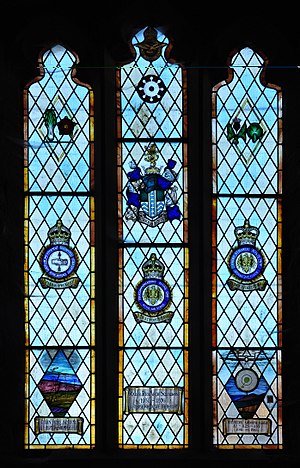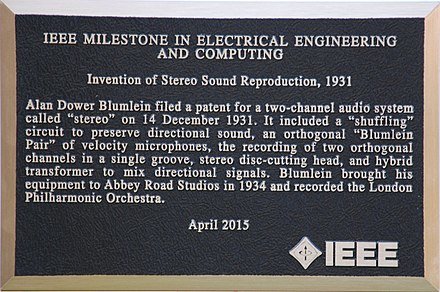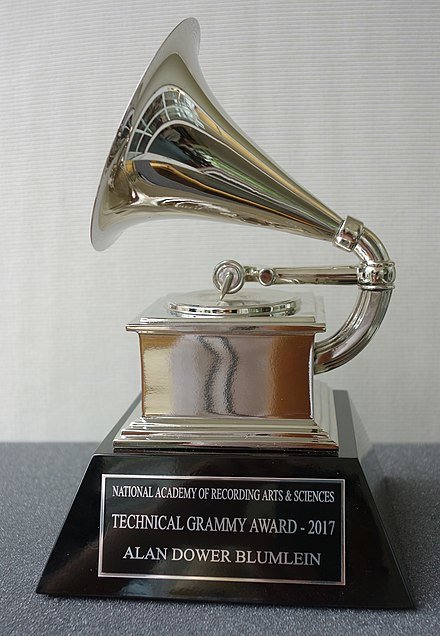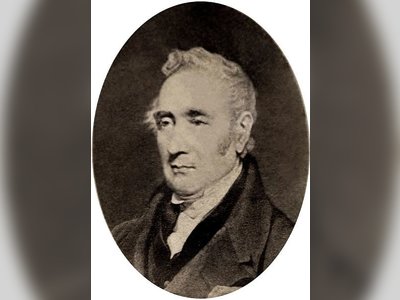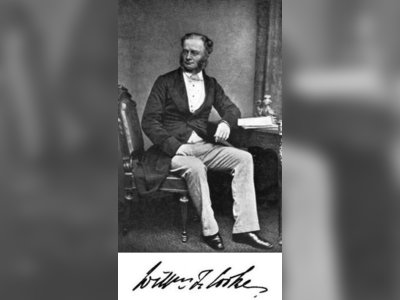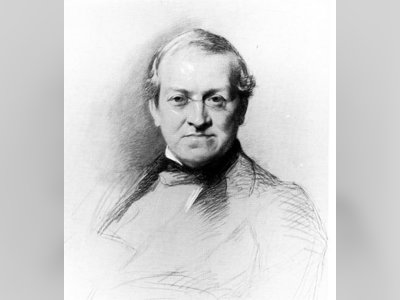British Heritage
Remember, Cherish, Learn.
beta
Alan Blumlein - Stereo 1931
The Indelible Impact on British Heritage and Beyond.
Alan Dower Blumlein, a titan in the field of electrical engineering, profoundly shaped modern telecommunications, sound recording, television, radar and even stereophonic sound. His accomplishments, notable in their own right, collectively form an unprecedented contribution to British heritage. Despite an untimely death at the age of 38 during World War II, Blumlein’s innovations continue to reverberate in various fields, from the music we listen to, to the technologies we depend on for communication and safety.
Born in Hampstead, London, on June 29, 1903, Alan Dower Blumlein was raised in a multicultural family. His father, Semmy Blumlein, was a German-born naturalised British subject of Jewish descent, and his mother, Jessie Dower, was of Scottish heritage.
By the tender age of seven, Blumlein demonstrated an early aptitude for engineering. He astonished his father by presenting him with an invoice for repairing the doorbell, signed as "Alan Blumlein, Electrical Engineer." This early display of his curiosity and aptitude for problem-solving hinted at the extraordinary engineer he would become.
After graduating with First-Class Honours in BSc from the City and Guilds College, Blumlein embarked on his career in telecommunications at International Western Electric in 1924. At the company, Blumlein made significant strides in his field, including developing an improved form of loading coil that reduced loss and crosstalk in long-distance telephone lines.
Blumlein joined the Columbia Graphophone Company in 1929 and subsequently played a crucial role in the merger of the Columbia Graphophone Company and the Gramophone Company to form EMI in 1931. His moving-coil disc cutting head drastically improved sound quality and circumvented existing patents, saving substantial royalties. His work with colleague Herbert Holman yielded a series of moving-coil microphones, which were adopted by the BBC and EMI recording studios.
Moreover, Blumlein was the visionary behind what is now known as stereophonic sound or "binaural sound." Frustrated by the monophonic sound's lack of depth and realism during a cinema outing with his wife, he conceptualised a system where sound could follow the actor's movements. This led to the patent "Improvements in and relating to Sound-transmission, Sound-recording and Sound-reproducing Systems," encompassing numerous stereo technologies in use today.
Blumlein’s impact extended beyond the realm of sound to the visual medium. As a member of the EMI team assigned full-time to television research, he made substantial contributions to the evolution of television technology. He was instrumental in the development of the waveform structure used in the 405-line Marconi-EMI system, which was adopted as the CCIR System A.
As World War II loomed, Blumlein’s inventive prowess found an application in radar technology. His role was pivotal in the development of the H2S airborne radar system. His untimely death during the trial of this very system led many to fear the project would collapse, but it persevered, and the H2S radar played a key role in shortening the war. The line type pulse modulator, another of Blumlein’s inventions, was a significant contribution to high-powered pulse radars, and this technology continues to be in use today.
Despite his extensive professional accomplishments, Blumlein balanced his work life with a fulfilling personal life. He married Doreen Lane, a preparatory school teacher, after two and a half years of courtship. They had two sons, Simon and David Blumlein.
Blumlein’s work has left an indelible impact on British heritage and indeed the world. His ingenuity has given us the stereo sound we listen to today, shaped modern television, enhanced telecommunications, and even played a part in World War II radar technology. His life and work serve as an enduring testament to the far-reaching potential of innovative thinking and engineering brilliance.
Life and Formative Years
Born in Hampstead, London, on June 29, 1903, Alan Dower Blumlein was raised in a multicultural family. His father, Semmy Blumlein, was a German-born naturalised British subject of Jewish descent, and his mother, Jessie Dower, was of Scottish heritage.
By the tender age of seven, Blumlein demonstrated an early aptitude for engineering. He astonished his father by presenting him with an invoice for repairing the doorbell, signed as "Alan Blumlein, Electrical Engineer." This early display of his curiosity and aptitude for problem-solving hinted at the extraordinary engineer he would become.
After graduating with First-Class Honours in BSc from the City and Guilds College, Blumlein embarked on his career in telecommunications at International Western Electric in 1924. At the company, Blumlein made significant strides in his field, including developing an improved form of loading coil that reduced loss and crosstalk in long-distance telephone lines.
Revolutionary Contributions to Sound Recording
Blumlein joined the Columbia Graphophone Company in 1929 and subsequently played a crucial role in the merger of the Columbia Graphophone Company and the Gramophone Company to form EMI in 1931. His moving-coil disc cutting head drastically improved sound quality and circumvented existing patents, saving substantial royalties. His work with colleague Herbert Holman yielded a series of moving-coil microphones, which were adopted by the BBC and EMI recording studios.
Moreover, Blumlein was the visionary behind what is now known as stereophonic sound or "binaural sound." Frustrated by the monophonic sound's lack of depth and realism during a cinema outing with his wife, he conceptualised a system where sound could follow the actor's movements. This led to the patent "Improvements in and relating to Sound-transmission, Sound-recording and Sound-reproducing Systems," encompassing numerous stereo technologies in use today.
Trailblazing Advances in Television
Blumlein’s impact extended beyond the realm of sound to the visual medium. As a member of the EMI team assigned full-time to television research, he made substantial contributions to the evolution of television technology. He was instrumental in the development of the waveform structure used in the 405-line Marconi-EMI system, which was adopted as the CCIR System A.
Contributions to Radar Technology and World War II Efforts
As World War II loomed, Blumlein’s inventive prowess found an application in radar technology. His role was pivotal in the development of the H2S airborne radar system. His untimely death during the trial of this very system led many to fear the project would collapse, but it persevered, and the H2S radar played a key role in shortening the war. The line type pulse modulator, another of Blumlein’s inventions, was a significant contribution to high-powered pulse radars, and this technology continues to be in use today.
Personal Life and Legacy
Despite his extensive professional accomplishments, Blumlein balanced his work life with a fulfilling personal life. He married Doreen Lane, a preparatory school teacher, after two and a half years of courtship. They had two sons, Simon and David Blumlein.
Blumlein’s work has left an indelible impact on British heritage and indeed the world. His ingenuity has given us the stereo sound we listen to today, shaped modern television, enhanced telecommunications, and even played a part in World War II radar technology. His life and work serve as an enduring testament to the far-reaching potential of innovative thinking and engineering brilliance.
- Alan Blumleinen.wikipedia.org


